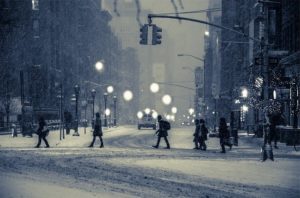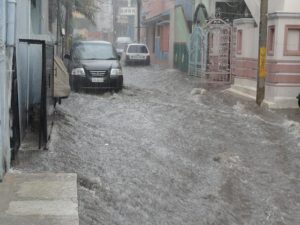The Dead and the Gone
The Last Survivors
By Susan Beth Pfeffer
So far, The Dead and the Gone is my favorite of the Life as We Knew It series. It was marketed as a companion book, but I feel it surpasses the original story Pfeffer wrote. Remember when I compared Life as We Knew It to Cormac McCarthy’s The Road? I take it back; this book is much more similar—but still for a younger audience.

The Dead and the Gone features the same premise as Life as We Knew It, but there are some big changes that have a powerful pull: the setting is New York City, a place which suffers immediate, direct, and deadly consequences after the moon disaster. Your narrator is still a teenager—Alex, a boy this time. However, he suddenly finds himself alone with two younger sisters to care for. Alex is constantly pitted against morality versus survival. What is he willing to do to survive in a city ravaged by tragedy with no help coming? The stakes in The Dead and the Gone are much, much higher.
Religion comes back full force in The Dead and the Gone. This time, it’s devout Catholicism. It fits into the story pretty well as Alex and his family are all of Puerto Rican descent. (The majority of Puerto Rico identifies as Catholic.) While religion of any type isn’t necessary to wrestle with morality, I do think Catholicism was a good choice to frame the story from. The three characters we see the most in The Dead and the Gone are each Catholic, but one is extremely devout, one is somewhere in the middle, and one struggles with their faith. (You can find out who’s who if you read the book!) The good framework comes from the dependencies and concessions Alex is shown to have with the church, confession, and education. Science versus religion isn’t really a problem in this book.
There are, of course, some plot points that I wish had been better formed. One point was why Alex didn’t break into more homes—because he does enter other people’s deserted homes to search for food, blankets, and items to trade. After months, Alex knows with something very close to certainty that he and his sisters are alone in their apartment building. Yes, yes, stealing is wrong, and that does come up, but possible starvation should overrule the fear of being found out when 90% of New York City has already been looted for the food sources it may be hiding.

Another was the fact a few schools stayed open under the pretense of education when it was really to feed the few kids left some lunch. I’m not saying this was a bad thing, but in a major United States city that’s been flooded, has no power, and millions of people living in it with no food trucks coming in and a single, weekly government handout that is unreliable and dangerous to be in line for—how do these two little schools find the resources to feed twenty or so kids lunch every day for months? Are adults starving so the children can eat? I’d believe it, but the answer the book gives us was no less than an unsatisfactory, “The church provides” or “God provides.” Annoying explanation, to be frank. Not actually an explanation at all.

That said, The Dead and the Gone still functions as a great book. It’s heart-wrenching, and can be scary, and, fantastical apocalypse aside, quite realistic in its portrayal of a broken humanity.
There’s two more books in this series, and I’m very curious about where Pfeffer plans to go next. Personally, I’m hoping for a continuation of events as the first two books quite thoroughly covered the immediate consequences of the moon disaster. Fingers crossed! Next up: This World We Live In.
~ Anna
(Entry 13)